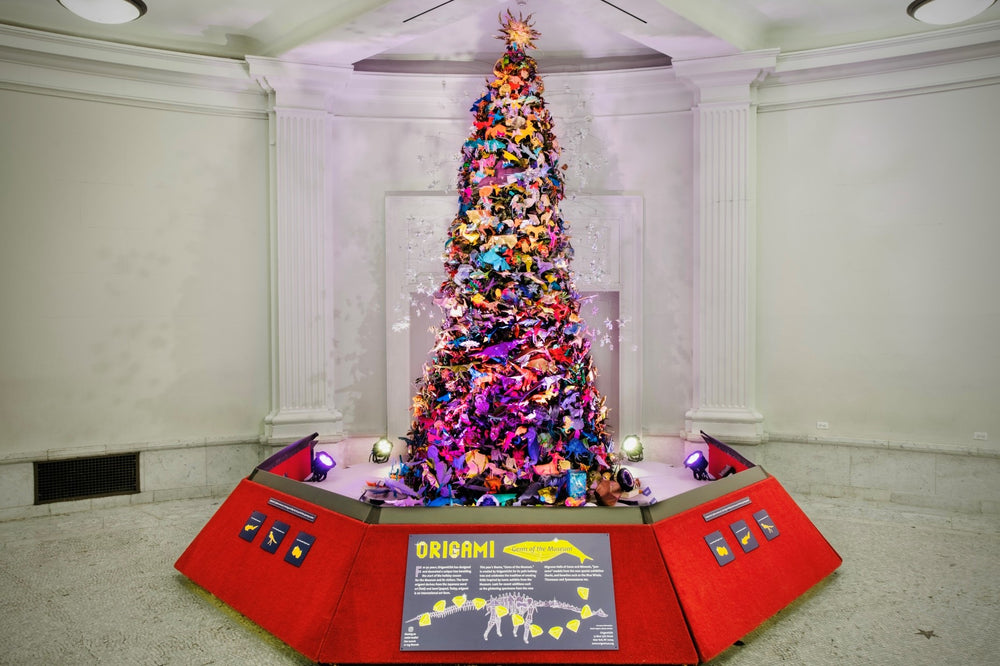Say the words “Christmas tree,” and what image comes to mind? A tall evergreen sprinkled with colorful lights? A spindly Charlie Brown tree that just needs a little love? Or maybe even a tiny outdoor one decorated with peanut butter and seed for the birds?
That’s the wonderful thing about Christmas trees: They’re universal--and also truly individual. Discovering new ones is one of the great joys of the season. One of the most beloved--and eagerly anticipated—is the 13-foot origami tree at the American Museum of Natural History in New York City.
The First Origami Tree
The first origami tree at The American Museum of Natural History wasn’t nearly as grand as the one now on display for the holidays. An entomologist who worked at the museum was interested in creating paper models of some of the insects in the museum’s collections. She partnered with OrigamiUSA (then the Origami Center of America) and created paper insects that adorned a small tree in one of the offices. It was such a success that the following year, a larger version went on display in the Theodore Roosevelt Memorial Hall—but this time, it included models that evoked different departments and displays throughout the museum. Not surprisingly, the public loved it--and a new annual tradition entered the fold.

A Long Time Folding
While the original tree took just a few weeks to put together, it now requires nearly a year of preparation, with work for the origami tree beginning in early spring of each year!
That’s when the theme is chosen, inspired by the Museum’s own collection. A new theme is chosen each year and by April, the process of creating the paper models begins. Past themes have included “Gems of the Museum,“ which featured 50 gold models in honor of the golden anniversary--the 50th Origami tree (2021/22); and “Origami Night at the Museum,” which highlighted museum exhibits that inspired characters in the Night at the Museum movies.
What is Origami?
So…what exactly is origami? The word “origami” comes from the Japanese words “ori” (folding) and ”kami” (paper.) It refers to the art of creating paper sculptures from sheets of paper though folding and sculpting—glue and cuts in the paper are generally not allowed. Models can range from the very simple to the extremely complicated. Origami dates to at least the 16th century--more than 500 years ago.
For the museum’s tree, both adults and kids from all over the world—from as far as Japan! --figure out how to fold the paper into the models; this part of the process can take weeks. The intricate designs start arriving at the museum in early fall--and the tree is also decked out with other models from the archives so filling out the tree is never a problem. It’s been an annual tradition for more than 40 years, so there’s always a lot to choose from!

Decorating The Origami Tree
The models aren’t just plopped on the tree; however, they’re looked at carefully to see how well they’ll all fit together. And believe it or not, even though the planning starts so long before the tree is unveiled to the public, the tree itself is decorated in just four days--and often includes more than 1000 models. In the past, these models have included fierce sharks, delicate fish, beautiful gems, planets, tools used in a dinosaur dig, and even space vehicles.
The trees are produced each year in partnership with Origami USA and they are usually on display every holiday season from the end of November through early January.
Origami Inspiration
Inspired to make your own origami models? Craft and paper stores often sell packages of origami paper, which is really all you need to get started. The American Museum of Natural History even offers videos that will show you how to get started with origami!




